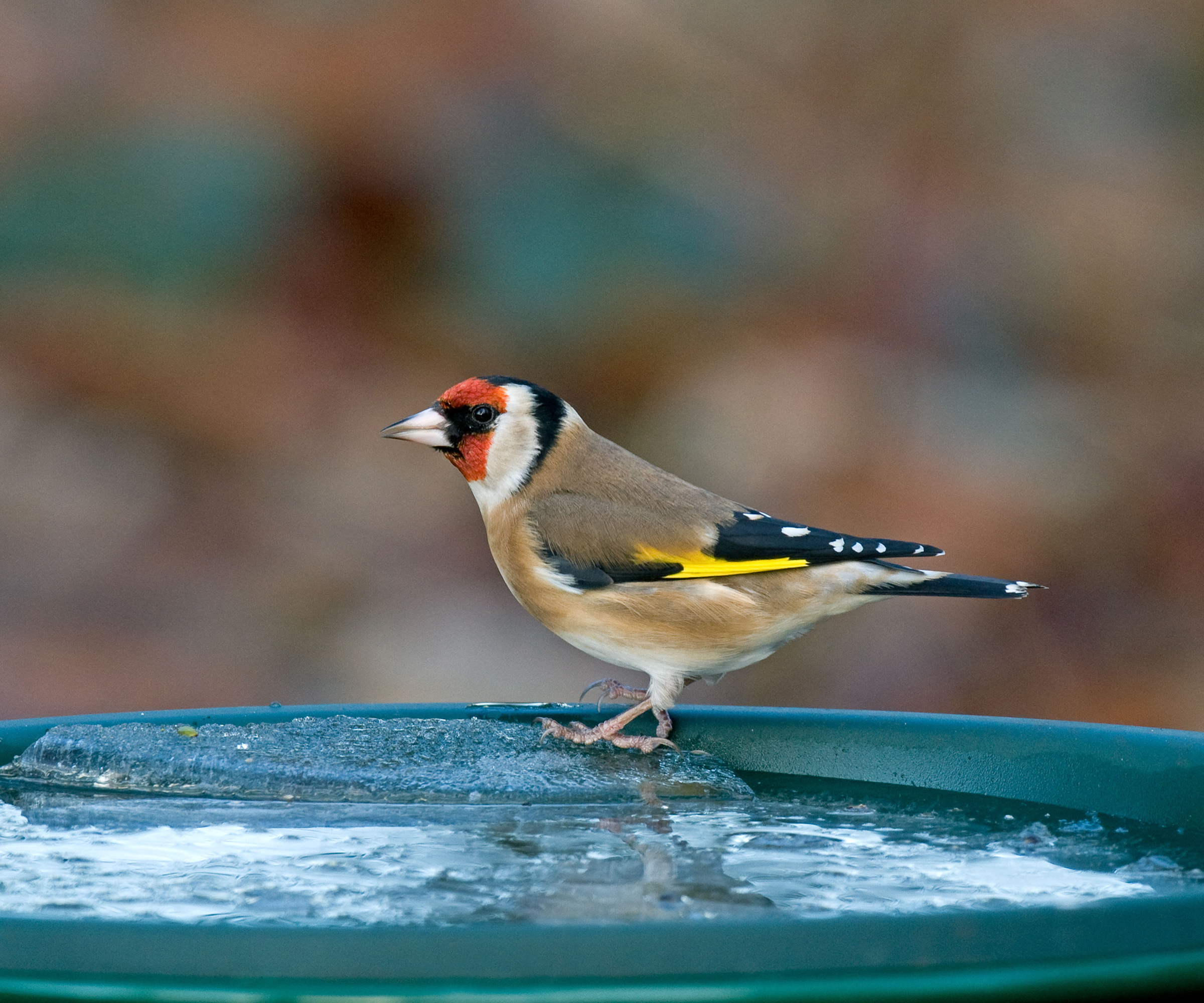
To help feathered friends over winter, it's good to take precautions to stop a bird bath from freezing. Like us, birds need water daily to survive, and over cold periods fresh drinking water can be harder to come by.
You might think it's not worth the effort to keep your bird bath frost-free, and wait for it to thaw naturally as the weather warms up. However, during winter the daylight hours are fewer, meaning birds have a tougher time finding food and water. Stopping it from freezing is therefore essential bird bath winter care.
In fact, the American Bird Conservancy tells us: 'In less than a single human lifetime, 2.9 billion breeding adult birds have been lost from the United States and Canada.' This is mainly caused by habitat loss and degradation. So, it's important we do everything we can to prevent the decline in populations by helping garden birds in winter.

6 ways to stop a bird bath from freezing over winter
There are several wildlife-safe ways to go about this. Methods which won't cause any damage to your bird bath ideas, either. Here are some expert-recommended options to try:
1. Keep a floating object in your bird bath

'To prevent a birdbath from freezing in winter, consider using a floating object like a small rubber ball, or we often will use a wine cork to create movement in the water, to inhibit freezing', suggests Amy Hovis, Principal and Landscape Designer at Eden Garden Design.
This is a low-cost, easy method, which will cause minimal disruption to your bird bath and visiting birds.
Try using these rubber balls from Amazon and make sure to check it every few days to ensure it hasn't been blown out the bird bath.
2. Position it in a bright location

A common bird bath mistake is not choosing a bright spot in the garden, which is in direct sun for most of the day. Bird baths placed in winter sunlight will have a better chance of not icing over than one in a shaded spot.
It's important that birds can stop and take a drink in safety. Therefore try and position them in a place to keep them safe from cats, too.
Howard Youth, senior writer at the American Bird Conservation advises making sure there is a clear line of sight for birds to spot ambushing cats. Be mindful of this when placing your bird house ideas as well.
3. Consider an electrical de-icer

'There are plug-in bird bath de-icers you can buy that you can use with a long outdoor extension cord,' says Amy.
These plug into a power source and float in the water of your bird bath, keeping the temperature above freezing. They are also good for keeping garden ponds from freezing. You will of course need an outdoor power socket and be sure to stop leads becoming a trip hazard.
Options with built-in heaters are also available to buy like this heated bird bath at Amazon.
4. Try a solar option

If you don't have an outdoor power source try a solar option. 'Solar-powered aerators or fountains can also be effective by maintaining water movement,' says Amy.
Similar to how the floating object works, solar aerators keep constant movement in the bird bath making it difficult for water to freeze over.
Usually for use in ponds and tanks, you can hook one of these up to your bird bath during winter. The motion will help keep the water from freezing.
5. Remove ice regularly

The old-fashioned way, though a little tenuous perhaps, is to regularly remove ice from a bird bath as it starts to form.
If you want to try this method, Amy Hovis recommends removing ice during extremely cold periods, as this prevents the formation of a thick layer of ice. Perhaps try to remember doing so when you go out to top up your bird feeder when feeding birds in winter.
You might need to use an ice scraper (from Walmart), but take care not to damage or scratch your bird bath.
6. Empty your bird bath before nightfall

If your wildlife garden is in a region where temperatures drop below freezing overnight, Amy suggests you could remove water when the sun goes down and top it up again the next morning, with warm water.
Birds won't be searching for water in the dark, and it means you won't need to worry about defrosting the water the next day. Replace your chosen floating device each time to prevent freezing during the day.
7. Use a dark bowl as an alternative

Another way to stop a bird bath from freezing in winter is swapping it out with a dark-colored bowl. This is less likely to freeze over, making it a more reliable water source for birds.
Isabelle Manseau, founder of Birdzy, explains that black and dark colors absorb and retain heat from the sunshine better than cooler tones. While it might not stop eventual freezing, it will delay freezing, making it more low-maintenance to check on.
You can also use a black bird bath liner from Amazon, or even paint the inside of your bird bath a darker color.
'These methods can make a big difference. Winter water sources are rare so having water available can be a lifeline,' Isabelle says.
FAQs
Can I use chemical products to stop my bird bath freezing?
We recommend steering clear of wildlife garden mistakes, such as chemicals which claim to keep your bird bath and ponds from freezing. These may be harmful to birds or upset the natural ecosystem of your backyard.
How do you defrost a frozen bird bath?
If your bird bath has frozen over the best way to defrost it is to pour over cold or warm water. Some people recommend using boiling water from a kettle, however this sudden temperature change could cause damage to your bird bath.
Your garden birds will greatly benefit from the fresh drinking water available to keep them alive over winter when resources are scarce. Don't forget to continue putting out food for birds in winter, too. If you're looking for a fun garden project, try making this natural bird feeder for the feathered visitors in your yard.







